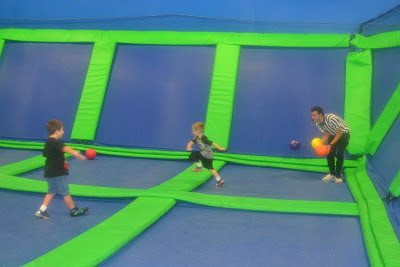A few weeks ago I attended a symposium at
Fantasy of Flight. Four Tuskegee Airmen spoke and answered questions about being the first African American aviators in the military, escorting bombers during World War II, and dealing with racism.
Panelists: Lt. Col. Leo Gray, Lt. Col. George Hardy, Pilot Daniel Keel, and Col. Charles McGee. Moderator: Barrington A. Irving, Jr.
Each one of these men worked hard to be a part of the Tuskegee Experience. Although they were successfully completing training and missions, there were commanding officers and cadre who strived to block them from advancing, and tried to get them discharged.
In Texas, Pilot Daniel Keel saw Tuskegee Airmen officers denied the right to eat in the officers' mess or enter the officers' club. When Lt. Col. Hardy was stationed at Freeman Field, he observed the German POWs housed on base given more freedom and better treatment than the black service members.
Lt. Col. Grey found that white service members who set up a base in Italy had warned the Italian townspeople about the black airmen who were coming, saying they had tails and would rape their women.
Lt. Col. Leo Gray and Lt. Col. George Hardy
The Tuskegee Airmen persevered in spite of the injustices and resistance they received. They only lost 25 of the bombers they escorted, less than any other fighter group. When the military held its first Top Gun competition in 1949, it was won by a Tuskegee Airmen from the 332nd fighter group, then 1st Lt. James H. Harvey III. Although Harvey wouldn't be officially recognized for his victory until April 1995.
Not only did the four men who spoke at the symposium earn their pilots licence and place in the Tuskegee Airmen, they went on to have distinguished careers.
- Col. Charles Mcgee flew in 409 combat missions over the course of three wars, more than any other service member. He eventually served as the Director of the Kansas City airport and as a member of the Aviation Advisory Commission
- Pilot Daniel Keel is one of three people rated as a bombardier, pilot, and navigator.
- Lt. Col. George Hardy flew in three wars. He also continued his education, getting two separate masters degrees in the engineering field.
- Lt. Col. Leo Gray worked for the Department of Agriculture, while continuing in the reserves.
These men have seen a lot of change in their lifetimes, and helped to bring about some of those changes. Pilot Daniel Keel noted that the Tuskegee Airmen were really the first civil rights group working towards equal rights and the end of segregation. Without riots or violence, they persevered to become pilots and serve their country. The next phase of civil rights would come in the 60's; focusing on buses, restaurants, and eventually school integration.
It is so important that their stories and experiences are not lost. It was an amazing opportunity to hear these heroes speak, and I am happy that my daughter got the chance to learn about this time in history from the men who were actually there.
Pilot Daniel Keel, and Col. Charles McGee
When asked what advice he would give to young people, Col. McGee shared *The Four P's:
- Perceive - Determine your talents, and find something you enjoy.
- Prepare - Get an education that will allow you to do the work that you love.
- Perform - Seek excellence. Do your best even in the small jobs as you work your way toward your goal.
- Persevere - Don't let circumstances be an excuse for not achieving.
Even though his answer was aimed at young people, I think it is applicable for anyone who wants to develop and pursue a dream.
Lee, Tracie, Jason, Col. Charles McGee, and Katarina
We were privileged to spend some time talking with Col. McGee after the symposium. Katarina asked him, "What was your favorite thing about being in aviation?"
McGee said, "It is hard to tell somebody the feeling you get - from my first flight - to be in the air and loop roll and spin, and then come back and put your feet on the ground. It is just a wonderful feeling. One of the things I found in flying that was really impressive was to be able to get in the aircraft as the sun was setting. To climb up to 40,000 feet in a jet, and see the sun set and the stars come out above. We human beings are just one small aspect in a grand universe. You get that feeling, but you have to be there to get it."
I loved his answer. It made me want to immediately sign up for flying lessons.
*I created a The Four P's graphic you may save, print, pin, or use.




























